Norwich Terrier
The Norwich Terrier is a small dog breed that belongs to the Terrier family and can be found mostly as a family pet and companion. They were first bred for vermin control and ratting. They were so effective in their job that the English hunters repurposed them for driving foxes out of their dens during hunts.
The Norwich Terrier is not your everyday Terrier. They are very friendly and affectionate towards people, other dogs, and even children. They are, however, very energetic, so be prepared to come up with many fun activities.

Height:
9,5-10 in (23-25 cm)

Weight:
11-12 lb (5-5,5 kg)

Origin:
Great Britain

Life Expectancy:
12-15 years
Dog Breed Characteristics
The Norwich Terrier’s characteristics are very similar to those of a Norfolk Terrier, and these two breeds’ main difference is their ears. The Norwich Terrier is one of the smallest terriers in the world, but nevertheless, it is a sturdy and well-built dog. Their eyes are dark and oval-shaped, and their ears are erect and on top of their head. These dogs might be small but are very powerful for their size.
The Norwich Terrier has a double coat. Their outer coat is longer and wiry. It used to protect them from sharp branches and bush they used to work in, and their undercoat is thick and wooly. It was a great insulator from extreme weather and water.
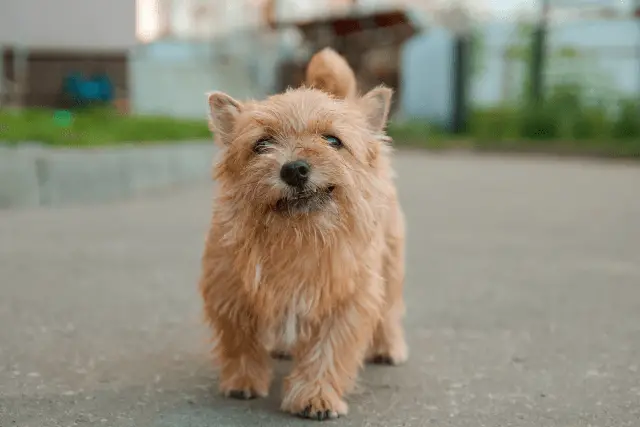
Coat & shedding
Norwich Terrier shed, and regular brushing will keep the amount of hair under control. Their coat needs to be stripped twice a year – pulling dead topcoats by hand.
Norwich Terrier coat colors:
- all shades of red, wheaten, black and tan, grizzle
They will also need other basic care; brush their teeth at least three times a week. Check their ears for signs of infection and redness, bathe them regularly, and trim their nails if they don’t wear them down naturally.
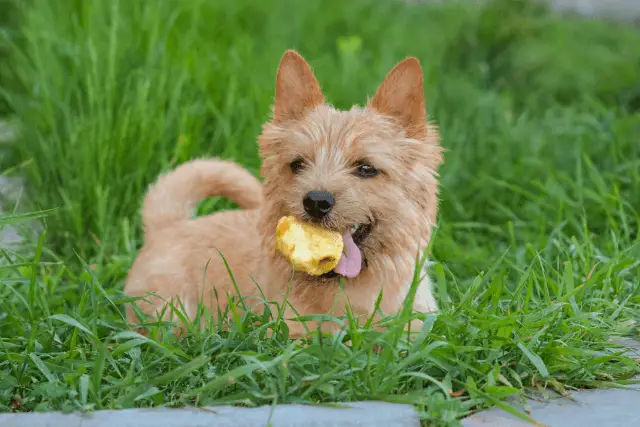
Exercise
Norwich Terrier is a highly energetic and active breed. These dogs need an active lifestyle to be happy. They love to be outside and be part of the action, whether running and chasing balls, playing, jumping, or jogging. If you are thinking about getting a Norwich Terrier, make sure you have enough free time and energy to spend it outside playing and training your Norwich Terrier.
If your schedule can’t allow you that, consider getting some less active breed. Except for daily activity, these dogs also need consistency. They like things to happen at the same time every day.
Norwich Terrier temperament
The Norwich Terrier is one of the nicest terriers out there. They are known for their tenderness and playfulness. They are also very adaptable and can get used to any living conditions as long as their physical needs are met. They are equally happy in an apartment and in a house with a large yard where they can run, catch mice, or dig.
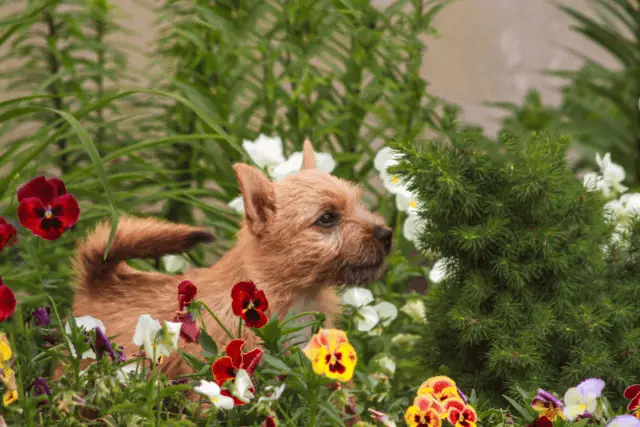
The Norwich Terrier is intelligent and thrives on human companionship. They love playing different games with their whole family and will gladly participate in whatever activity they choose.
Norwich Terrier training and socialization
Just because the Norwich Terrier is small doesn’t mean they should not be properly trained and socialized. You should expose your dog to many different situations, dogs, and people as soon as your Norwich Terrier puppy arrives at your home. They are fairly intelligent and have a decent willingness to please their owners, and that means they will respond great to training. Keep the training sessions short and interesting and include a lot of praise, treats, and food.
The Norwich Terrier is naturally friendly towards everyone, so socialization should be a piece of cake. That doesn’t mean you shouldn’t socialize with your dog because they have a natural tendency for friendliness. Unsocialized dogs can become problematic and develop behavioral disorders.
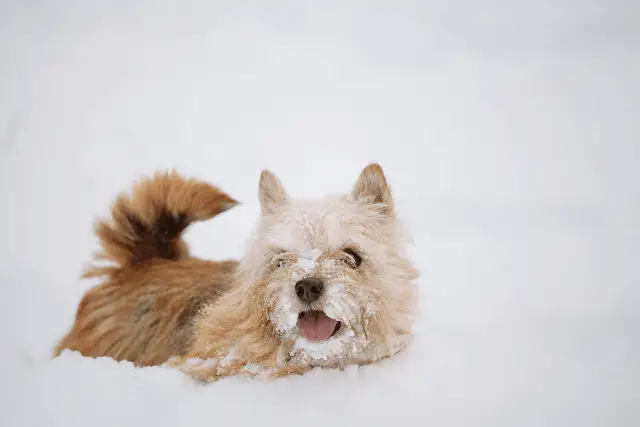
Health problems
Norwich Terriers are dogs with a life expectancy of 12-15 years. Like any other dog breed, they are prone to health problems that every (future) owner should be aware of. To ensure you'll get the healthiest possible dog, never buy a dog from a puppy mill breeder or a pet store. Norwich Terriers can suffer from
- Epilepsy - Brain problem causing mild to severe seizures.
- Hip dysplasia - Genetic problem affecting hips resulting from an improperly formed hip joint.
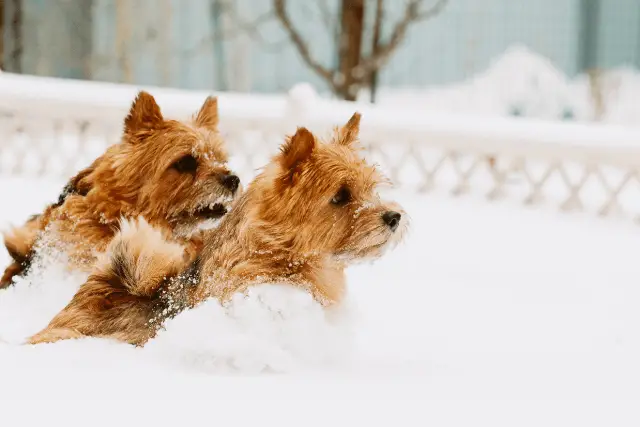
Breeders
If you decided that this is the right dog for you, now it's time to find a good and responsible Norwich Terrier breeder. Buying a dog from such a breeder will provide you with a healthy puppy who will not have health and temperament problems. These dogs became very popular, and many unethical and bad breeders started to breed these dogs to earn money without worrying about puppy health, temperament, and well-being.
Buying a dog from a responsible breeder will cost you more money, but you can be sure you will get a healthy puppy. If you are unable to buy a dog, we advise you to search for local animal shelters because there is a chance you can find Norwich Terrier dogs in them.
When you bring your new puppy home, start with the training and socialization immediately. By doing so, you will end up with a well-behaved dog whom you can trust. Provide him with enough daily exercise for him to be happy. With this dog, you must be firm and alpha for him to listen to you. If you devote your time and energy to this dog, you can be sure that you will have a companion for life.
SEARCH NORWICH TERRIER BREEDERS
World Dog Finder team

Updated at31.08.2023.
Breed History
Norwich Terrier’s history is not the oldest or the longest, but it’s certainly one of the most interesting. These dogs share a lot of their history with the Norfolk Terrier. As a matter of fact, the Norfolk Terrier was considered to be a Norwich Terriers variety with dropped ears. It wasn’t until 1964 when The British Kennel Club split these dogs into two different breeds.
There is a Norwich Terrier breeder that needs to be mentioned when we are talking about the history of the Norwich Terrier and that is Mr. Frank Jones.
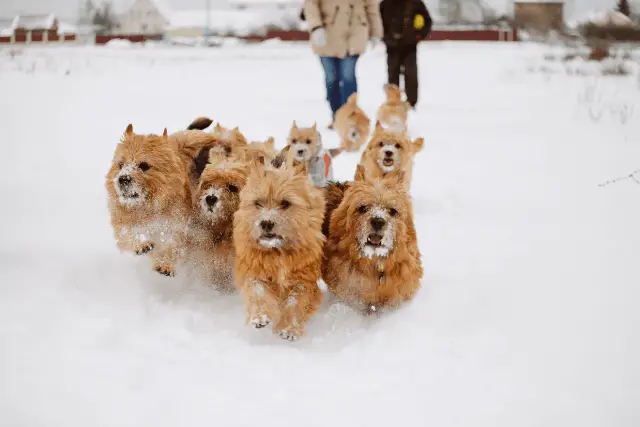
Mr. Jones took his Norwich Terriers and moved to the USA where he further developed and employed these dogs in a wide range of jobs. They were very effective in vermin control, and soon Mr. Jones introduced them to American hunters. Those hunters started using these dogs for fox hunting and tasked the Norwich Terrier to go to a fox den and drive the fox to an open space where it could be either shot or caught by a Foxhound.
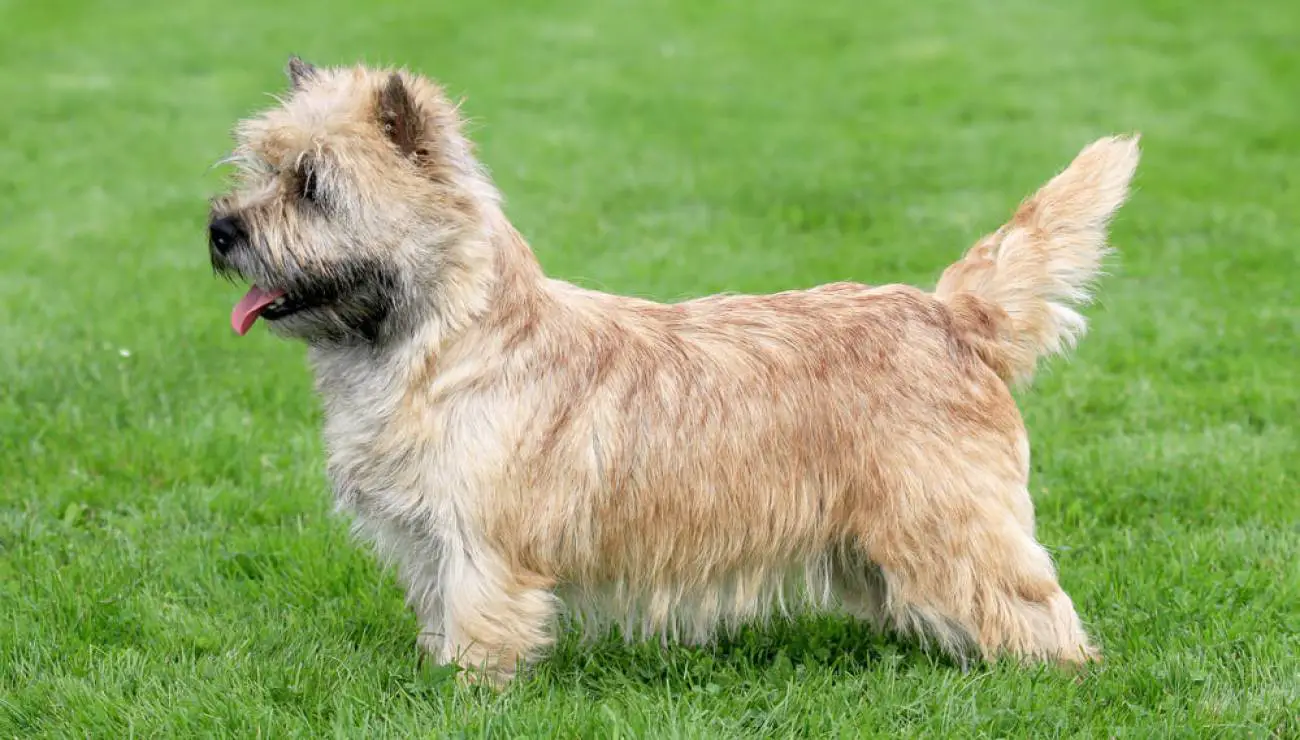
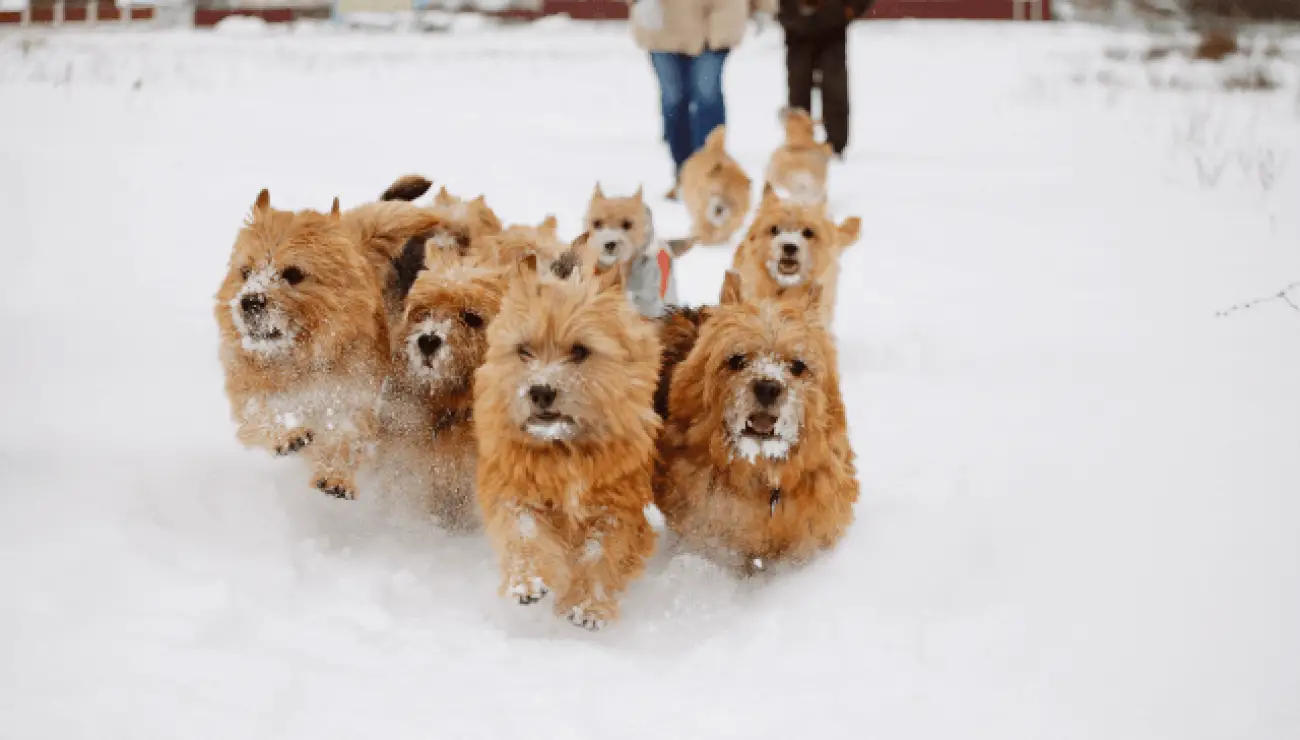
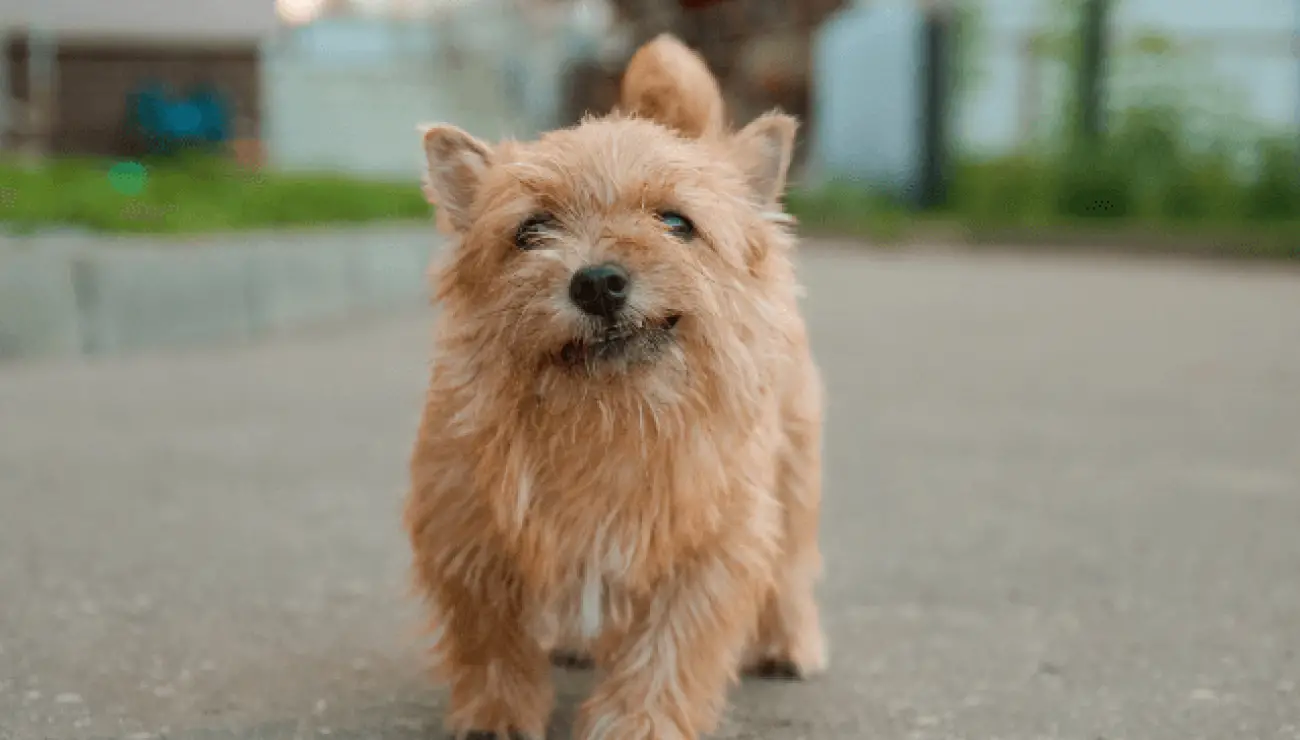
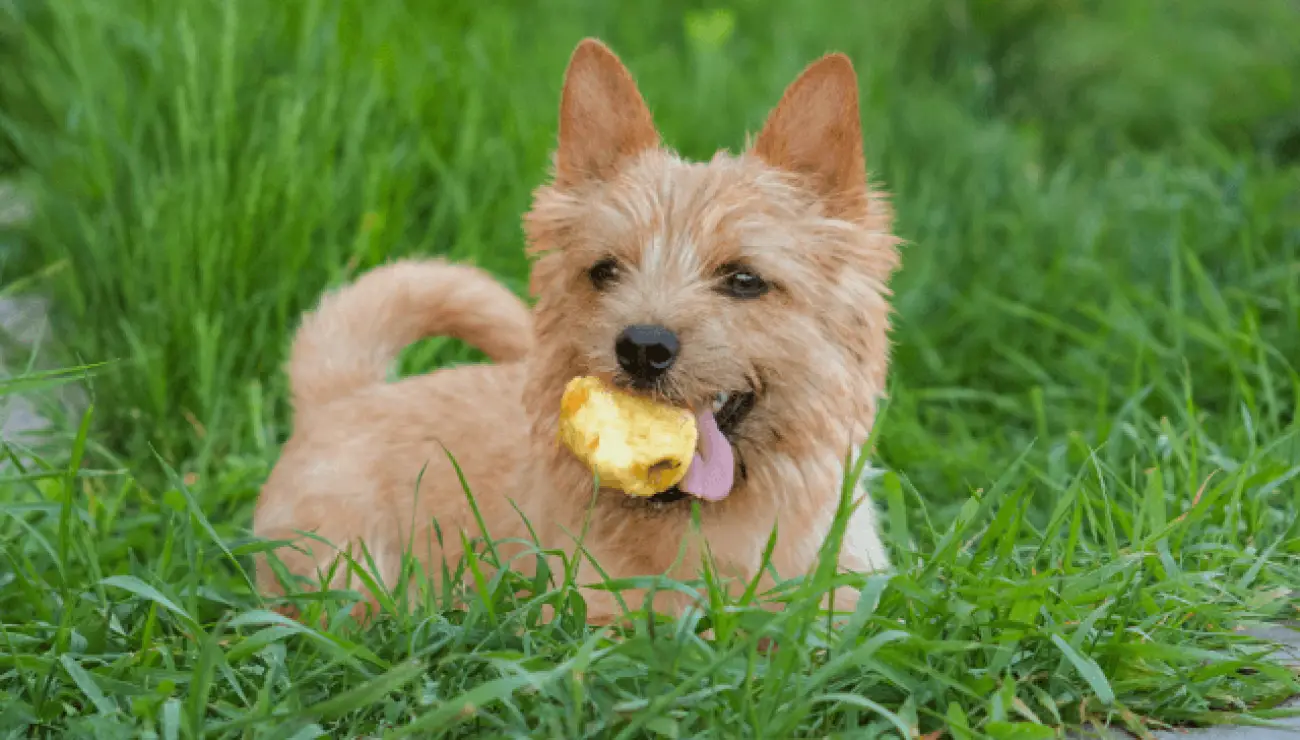
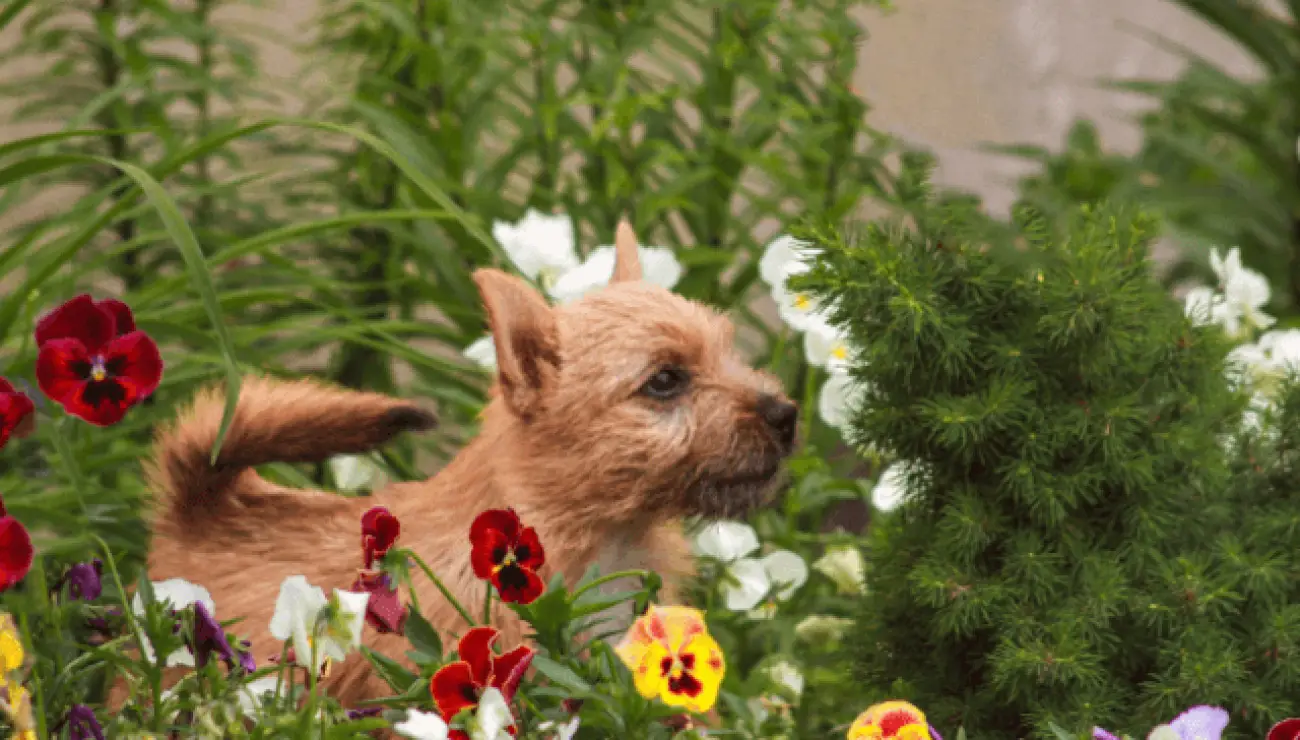
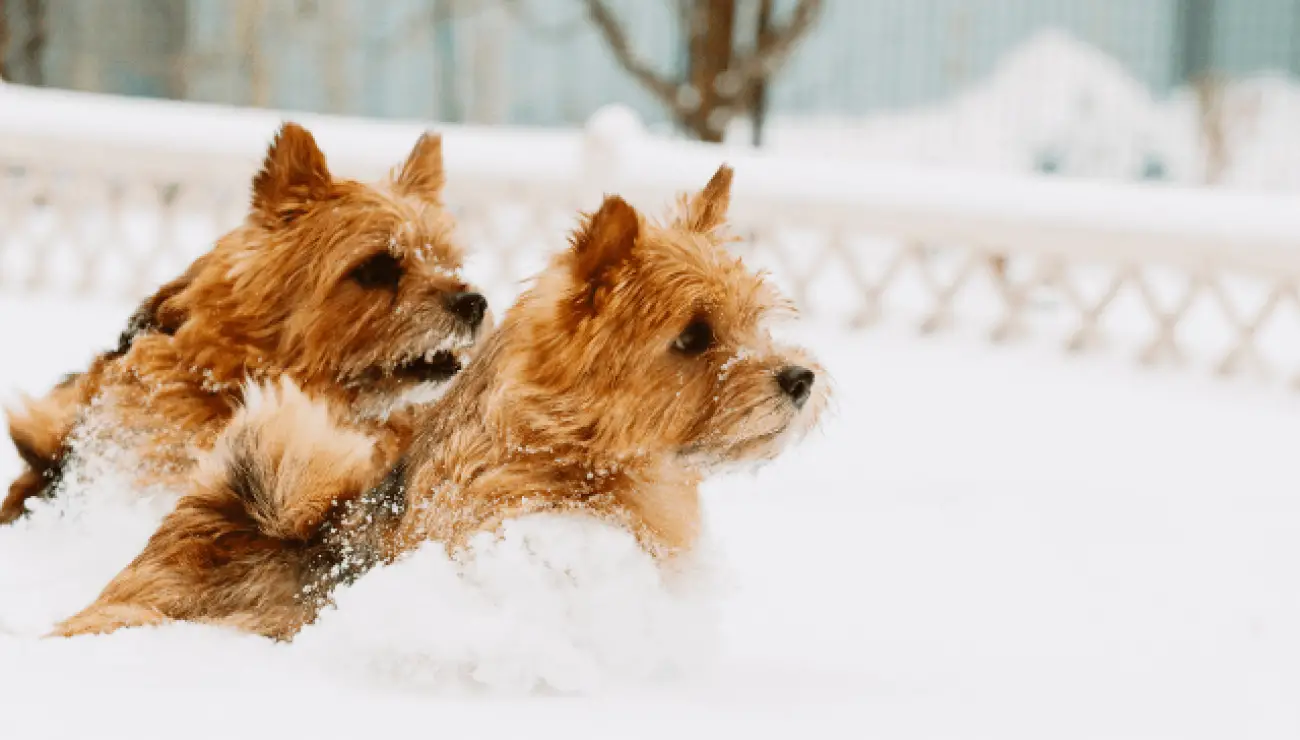
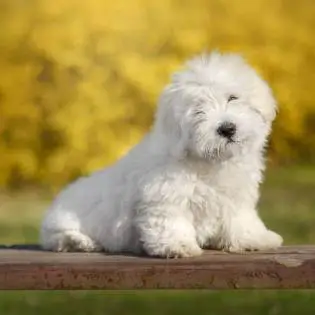
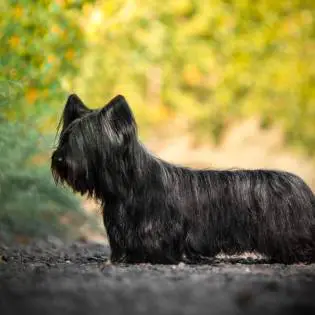
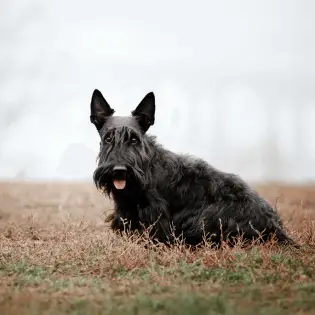
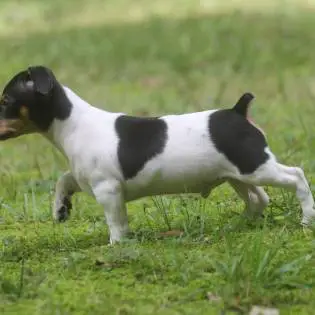
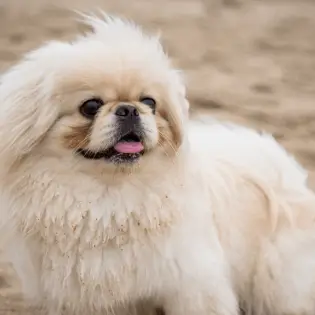
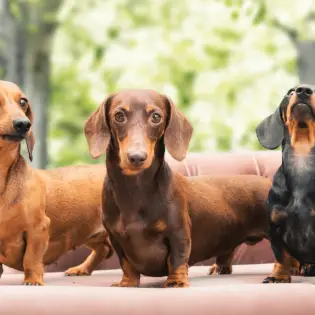
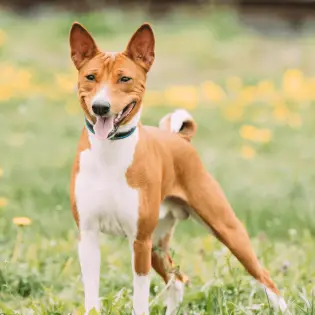
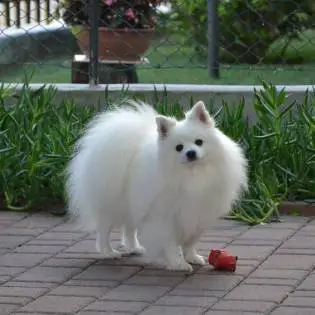
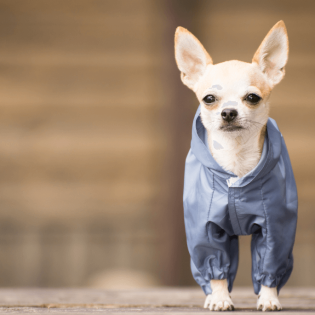
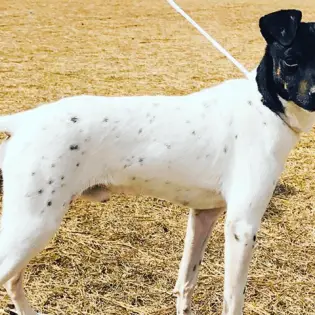

Share